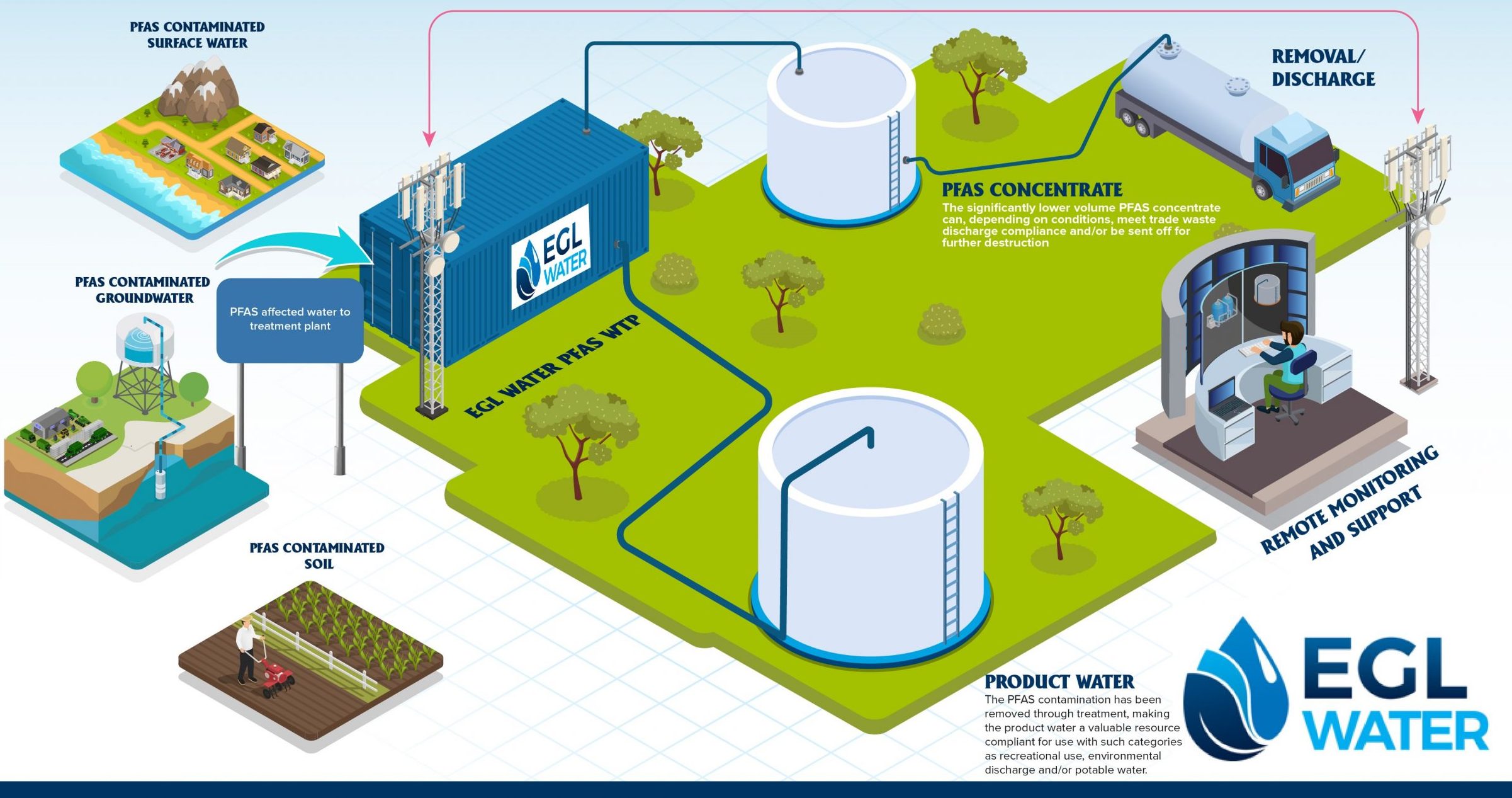Advanced Approaches for Reliable PFAS Contamination Elimination
The consistent obstacle of PFAS contamination requires the exploration of sophisticated removal approaches that can efficiently address these unsafe substances. Cutting-edge technologies, such as sophisticated oxidation procedures and various adsorption strategies, have actually arised as encouraging remedies in mitigating PFAS from influenced atmospheres.
Understanding PFAS Qualities
Although per- and polyfluoroalkyl compounds (PFAS) have actually been extensively made use of in different commercial and consumer items due to their special buildings, their perseverance in the environment presents significant challenges to public wellness and safety. PFAS are a team of synthetic chemicals characterized by a carbon-fluorine bond, one of the strongest chemical bonds known, which adds to their exceptional stability and resistance to degradation. This stability enables PFAS to collect in the setting and living organisms, causing possible adverse health and wellness effects.
These very same residential properties contribute to their ecological persistence, as PFAS do not quickly break down through natural processes. Understanding the chemical residential or commercial properties of PFAS is vital for creating efficient techniques to handle and reduce their environmental influence.
Innovative Removal Technologies
The determination of PFAS in the environment has spurred the advancement of ingenious remediation modern technologies focused on successfully getting rid of these pollutants from influenced ecosystems. Among one of the most promising approaches are advanced oxidation processes (AOPs), which utilize powerful oxidants to break down PFAS substances right into much less damaging compounds. AOPs can be tailored to target certain PFAS structures, enhancing their efficacy.
One more arising technology is the usage of adsorption media, such as activated carbon and ion exchange resins, which can uniquely catch PFAS from contaminated water. These materials have revealed substantial removal performances, although regular substitute and regeneration are essential to preserve performance.
Membrane filtering methods, including reverse osmosis and nanofiltration, are likewise getting grip in PFAS remediation. These techniques can efficiently separate PFAS from water, giving a feasible remedy for treating contaminated resources. Additionally, thermal treatment methods, such as incineration, can disintegrate PFAS into non-toxic byproducts, though they require careful management to manage discharges.
Jointly, these innovative remediation modern technologies stand for substantial improvements in the continuous battle versus PFAS contamination, supplying numerous strategies to recover affected atmospheres and protect public wellness.

Bioremediation Strategies
Bioremediation techniques use a promising technique to dealing with PFAS contamination by harnessing the natural capacities of bacteria to weaken these relentless compounds (m270 waste management). This technique entails making use of microorganisms, fungi, and other microorganisms that can metabolize or change PFAS substances right into much less hazardous by-products
Recent improvements in molecular biology and ecological microbiology have enhanced our understanding of microbial areas and their possible duties in PFAS degradation. Scientists are proactively exploring certain strains of bacteria, such as Pseudomonas and Bacillus, which have actually demonstrated Read Full Article the capability to damage down certain PFAS compounds.
In situ bioremediation methods, where bacteria are boosted directly in infected environments, can be especially reliable. This technique usually entails the application of nutrients or electron benefactors to advertise microbial growth and activity. Additionally, ex lover situ approaches, such as bioreactors, enable for regulated problems that can enhance degradation prices.
In spite of the guarantee of bioremediation, obstacles continue to be, including the complicated nature of PFAS compounds and the demand for comprehensive field screening - m270 waste management. Proceeded research study and growth will be important to fine-tune these strategies and examine their performance in diverse environmental contexts
Adsorption and Filtration Techniques
Attending to PFAS contamination often entails using adsorption and filtration techniques, which are created to eliminate these consistent chemicals from water and soil. Amongst the different strategies, triggered carbon adsorption is extensively utilized because of its high area and porosity, allowing effective capturing of PFAS particles. Granular turned on carbon (GAC) systems are specifically favored for treating large volumes of contaminated water, while powdered triggered carbon (POLITICAL ACTION COMMITTEE) can be utilized for smaller-scale applications.
Ion exchange materials also reveal guarantee in PFAS removal, functioning by exchanging PFAS ions with less hazardous ions in the water. This method has actually shown efficiency in focusing PFAS compounds, facilitating their subsequent elimination. Additionally, membrane purification strategies, such as reverse osmosis and nanofiltration, operate by utilizing semi-permeable membranes to separate PFAS from water, effectively reducing their concentrations.
While these approaches work, they must be meticulously chosen based on the certain PFAS compounds existing and the environmental context. Constant advancements in products science and design are resulting in the development of unique adsorbents and purification systems that enhance removal efficiencies and lower operational costs, thereby enhancing overall removal initiatives.
Regulatory and Plan Considerations
Just how can reliable governing structures boost the monitoring of PFAS contamination? Thorough policies are important to make certain a coordinated and robust action to the obstacles postured by per- and polyfluoroalkyl materials (PFAS) Regulations can establish clear guidelines for monitoring, reporting, and remediating PFAS-contaminated websites, promoting liability among markets and public entities. (m270 waste management)

Additionally, economic rewards and grants can visit the website be integrated into policies to motivate the adoption of innovative remediation modern technologies. Policymakers must additionally prioritize research and development, making certain that arising methods for PFAS removal are verified and implemented effectively.
In addition, public awareness and involvement are essential elements of any type of governing strategy, equipping neighborhoods to advocate for their health and security. Inevitably, a well-structured regulatory environment will not just boost the administration of PFAS contamination yet additionally advertise sustainable practices that secure future generations.
Conclusion
In recap, the complexity of PFAS contamination requires the navigate to this website fostering of sophisticated removal methods. Innovative technologies such as innovative oxidation processes, adsorption techniques, and membrane filtering have shown significant efficiency in eliminating these persistent substances from contaminated water resources. Furthermore, governing structures should develop to support the implementation of these innovations, guaranteeing secure and reliable management of PFAS toxins. Proceeded research and development in this field stay essential to addressing the difficulties posed by PFAS contamination.